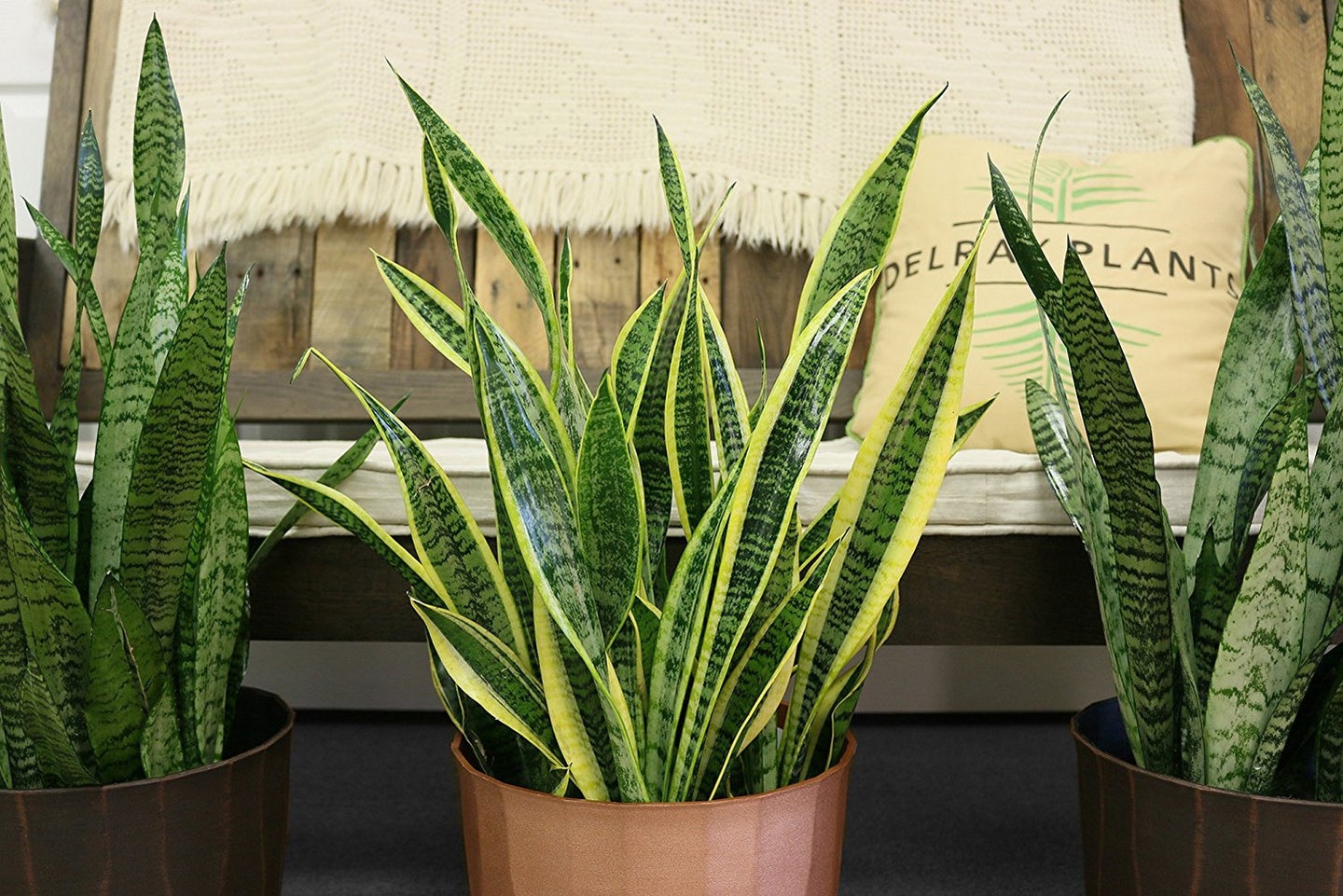Low-Maintenance Houseplants to Spruce Up Your Home This Winter
You can still add a pop of green to your space in the dreary months.
Published Sep 28, 2018 6:39 PM
We may earn revenue from the products available on this page and participate in affiliate programs.
When you think of winter, lush, colorful greenery probably isn’t the first thing that comes to mind—those long, dreary months can put a damper on anyone. But there are definitely a few plants you can add to your home to spruce up your space during these dark days.
“Plants are super keen on seasonal changes, and have different needs in the winter as compared to the summer,” explains Erin Marino of The Sill. “In the winter, the sun is setting (much) earlier, swinging lower in the sky, and is often covered with clouds. Although your plants are inside, these changes will impact them.”
So, how do you take care of your plants during the winter? Aside from finding those that are drought-resistant and don’t need much light, Jesse Waldman from Pistils Nursery has quite a few tips.
A general rule of thumb for winter plant care is less light = less water.
The amount of water your plant needs is directly related to the amount of light it’s getting. Winter means shorter, overcast days, and your plants will not be getting nearly the light they do during summer. You’ll notice the soil stays wet longer after you water because your plants aren’t drinking as much up (the cool temperatures also reduce the rate of evaporation). Take care not to over-water this time of year, as your plants are semi-dormant—over-watering can drown them.
Add some extra humidity, especially for tropicals with thin, sensitive foliage, like calathea and spider plants.
One easy way to do this is to fill a dish with pebbles, and put your plant on top of that. Then, fill the dish with water so it reaches just under the top of the pebbles. That way, your plant isn’t sitting in a puddle, but the extra water will evaporate and create a little humid microclimate around your plants.
No fertilizer is necessary during winter.
Since your houseplants aren’t growing actively right now, the fertilizer would just build up in the soil this time of year—this would burn the roots and damage the plant.
Ahead, check out expert-approved picks for easy, low-maintenance winter plants.
The Schlumbergera Species
“Like clockwork, these cacti produce a gorgeous flush of bright pink, yellow, orange red, or purple blossoms just when the weather starts to get especially grey,” says Waldman. “Plus, since these are epiphytic cacti (growing on other trees) and live in jungle climates, they don’t need intense bright light like other cacti, making them versatile and easy to care for houseplants.”
Christmas Cactus Kokedama, Pistils Nursery, $48
The ZZ Plant
“When it comes to ‘bulletproof’ houseplants, the ZZ Plant is the gold standard,” says Waldman. “This waxy-leafed tropical has thick, succulent roots which hold lots of water, meaning it will barely need water throughout winter months (low-maintenance is always a plus). It’s extremely low light tolerant, so while other houseplants need to crowd around windows to thrive in winter, this one should be fine to stay put.”
ZZ Plant, Pistils Nursery, $14
Ornamental Anthuriums
“Anthurium is a large genus of plants beloved by houseplant collectors for their interesting foliage and brightly colored flowers,” says Waldman. “Many different cultivars are grown specifically for their multi-colored, heart-shaped blooms, which is why we think these make a perfect Valentine’s Day plant. With proper care, the plants produce blooms year-round, and the flowers can last for several weeks. They’ll need a bright spot with moderate-high humidity to thrive in winter, however, so do mist them periodically.”
Anthurium Kokedama, Pistils Nursery, $48
Ludisia Discolor
“Also known as the jewel orchid, these plants are grown for their foliage, rather than their blossoms,” says Waldman. “But don’t let that dissuade you: The blossoms that appear in winter or early spring are gorgeous (tiny white, pink, and yellow flowers on a tall bloom spike), and contrast dramatically with the dark purple leaves, lined with pink veins. They’re great for low light and need little maintenance.”
Ludisia Discolor – Jewel Orchid, Pistils Nursery, $38
Satin Pothos
“Velvety in texture, with splotches of silvery variegation that look different depending on the light, this is a low-medium, light tolerant houseplant,” says Waldman. “It produces vines of seemingly limitless length that cascade beautifully from a hanging planter, or climb up your walls with a little support. We love it because it’s beautiful without being fussy.”
Silver Philodendron, The Sill, $4
Peperomia Obtusifolia
“If you don’t have a humidifier, or if your apartment gets mega dry in the winter, selecting fleshier plants like the Peperomia Obtusifolia will lead to success for keeping plants through the winter if you’re a plant newbie,” says Marino. “Waxier plants with thicker parts or bark will fare better than plants with thin, delicate leaves, like ferns.”
Peperomia Green, The Sill, $48
Rubber Tree
“Similar to the Peperomia, the rubber tree also does fairly well in most homes in the winter,” says Marino. “It has both waxy leaves to retain moisture, and a woody bark to protect from dryness.”
Rubber Plant, The Sill, $48
See more plant tips:
The Chic Houseplants You Should Be Buying in 2018 Everything You Need to Know About Creating a Living Wall Fake Plant Decor For When You Kill All Your Real Ones
Learn to love your inbox again—sign up for Domino’s daily email.
